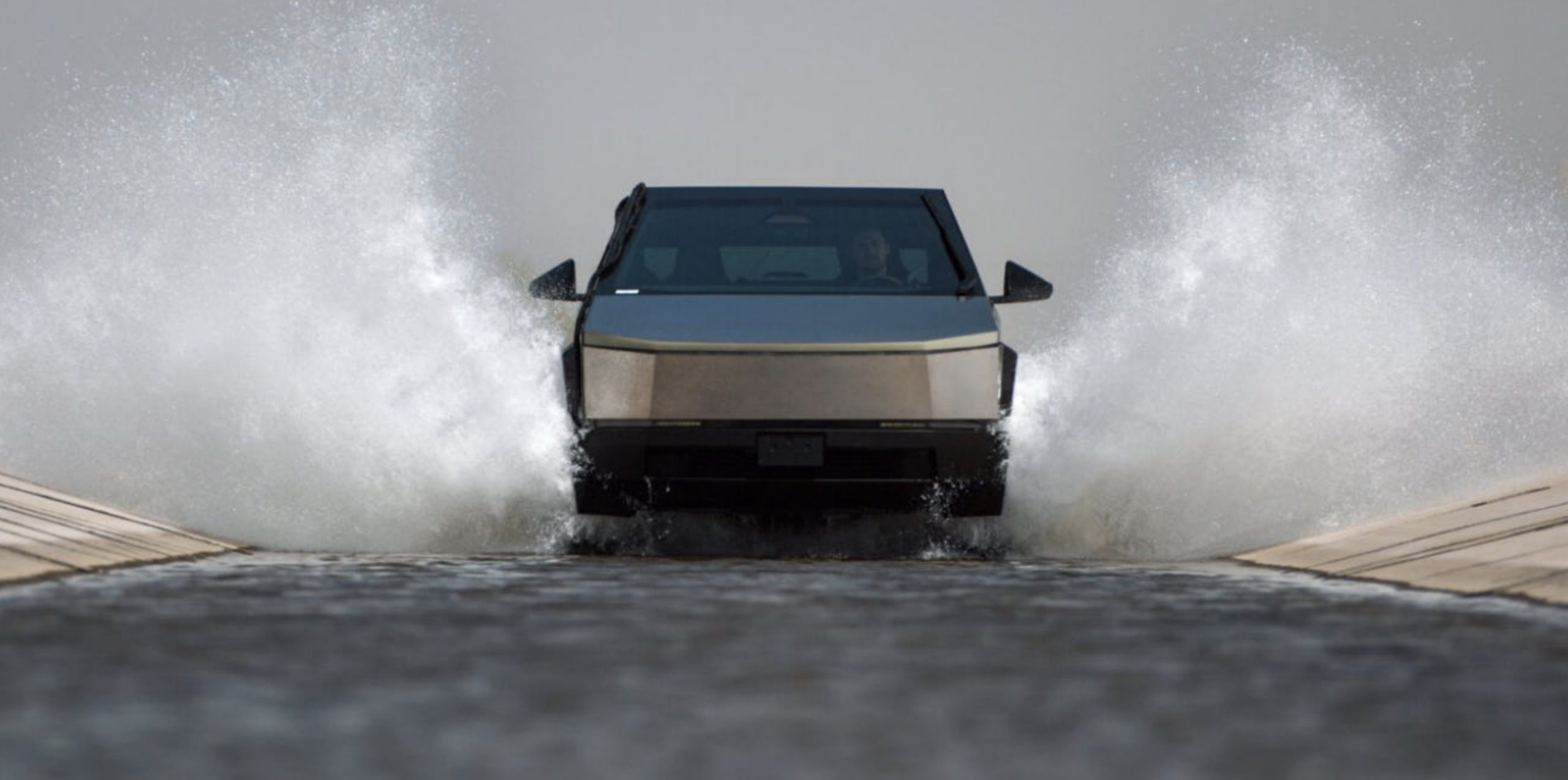
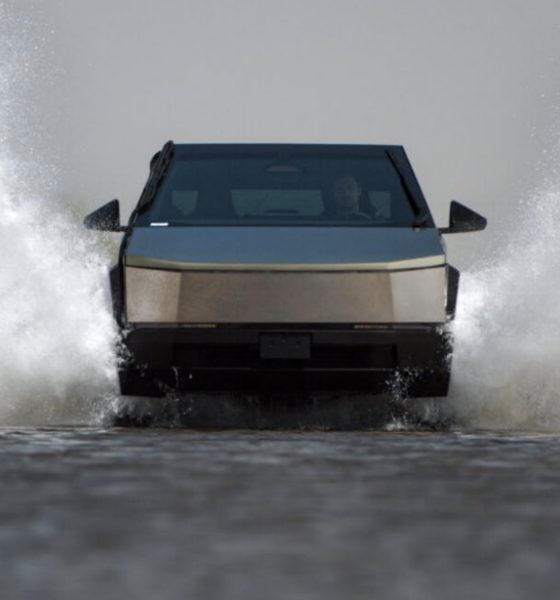
News
Tesla Cybertruck orders reach 1.9 million as Musk details ‘off the hook’ demand
Tesla Cybertruck orders have surpassed 1.9 million just days after CEO Elon Musk detailed that demand for the vehicle is “so off the hook, you can’t even see the hook.”
Tesla Cybertruck orders are swelling to the point that people are still throwing deposits down even though they may be waiting four or five years until they receive their truck.
The all-electric pickup is uniquely designed, so people are without a doubt interested in not only the one-of-a-kind look but also the claims Tesla has brought to the table.
In this past Earnings Call, which happened on Wednesday, Tesla said the Cybertruck is “the first truck that we’re aware of that will have four doors over a six-foot bed and will fit into a 20-foot garage. So, it’s sort of biggest on the outside, but it’s even bigger on the inside.”
Demand is evident for the truck, and Musk said during the Call on Wednesday that:
“Demand is so far off the hook, you can’t even see the hook.”
Musk believes the truck’s offerings are so unique that people simply won’t be able to stay away from it:
“I do want to emphasize that the Cybertruck has a lot of new technology in it, like a lot. It doesn’t look like — it doesn’t look like any other vehicle because it is not like any other vehicle.”
As of now, the Cybertruck has reached 1,943,876 reservations, as of 2:30 PM EST on Friday, July 21. This equates to over $194 million in pre-order revenue for the pickup.
This is according to a crowd-sourced data tracker. It is important to note the tracker may not be the best way to capture the accurate number of pre-orders because the $100 pre-order deposit isn’t much to blink an eye at for many, but it is all we have to go off of currently.
This 1.9 million order number is nearly double what the reservation count was a little over two years ago. In May 2021, we reported the vehicle had finally eclipsed 1 million pre-orders, roughly 18 months after the truck was unveiled.
Cybertruck production will have some serious ramping to do to get all of the reservation holders their vehicles in a reasonable amount of time. Musk said the production ramp “will move as fast as the slowest and least likely elements of the entire supply chain and internal production. So, I wouldn’t expect — I hope it’s smooth.”
Tesla did not reveal any additional details regarding pricing or configurations during the call on Wednesday, but did state that it still is on track to deliver the vehicle by the end of the year.
Please email me with questions and comments at joey@teslarati.com. I’d love to chat! You can also reach me on Twitter @KlenderJoey, or if you have news tips, you can email us at tips@teslarati.com.
Quotes via Seeking Alpha

News
Elon Musk makes a key Tesla Optimus detail official
“Since we are naming the singular, we will also name the plural, so Optimi it is,” Musk wrote on X.
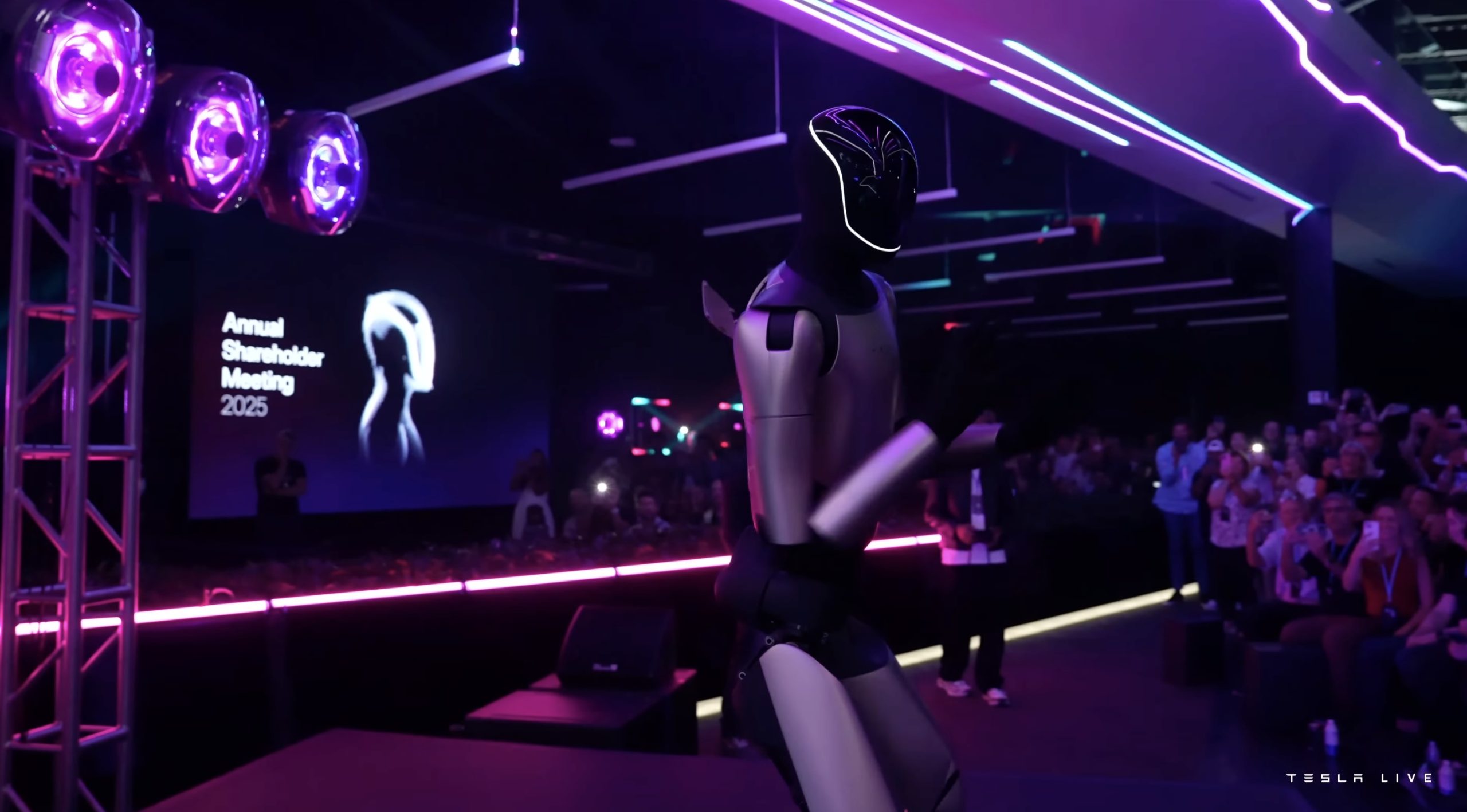
Tesla CEO Elon Musk just made a key detail about Optimus official. In a post on X, the CEO clarified some key wording about Optimus, which should help the media and the public become more familiar with the humanoid robot.
Elon Musk makes Optimus’ plural term official
Elon Musk posted a number of Optimus-related posts on X this weekend. On Saturday, he stated that Optimus would be the Von Neumann probe, a machine that could eventually be capable of replicating itself. This capability, it seems, would be the key to Tesla achieving Elon Musk’s ambitious Optimus production targets.
Amidst the conversations about Optimus on X, a user of the social media platform asked the CEO what the plural term for the humanoid robot will be. As per Musk, Tesla will be setting the plural term for Optimus since the company also decided on the robot’s singular term. “Since we are naming the singular, we will also name the plural, so Optimi it is,” Musk wrote in his reply on X.
This makes it official. For media outlets such as Teslarati, numerous Optimus bots are now called Optimi. It rolls off the tongue pretty well, too.
Optimi will be a common sight worldwide
While Musk’s comment may seem pretty mundane to some, it is actually very important. Optimus is intended to be Tesla’s highest volume product, with the CEO estimating that the humanoid robot could eventually see annual production rates in the hundreds of millions, perhaps even more. Since Optimi will be a very common sight worldwide, it is good that people can now get used to terms describing the humanoid robot.
During the Tesla 2025 Annual Shareholder Meeting, Musk stated that the humanoid robot will see “the fastest production ramp of any product of any large complex manufactured product ever,” starting with a one-million-Optimi-per-year production line at the Fremont Factory. Giga Texas would get an even bigger Optimus production line, which should be capable of producing tens of millions of Optimi per year.
News
Tesla is improving Giga Berlin’s free “Giga Train” service for employees
With this initiative, Tesla aims to boost the number of Gigafactory Berlin employees commuting by rail while keeping the shuttle free for all riders.
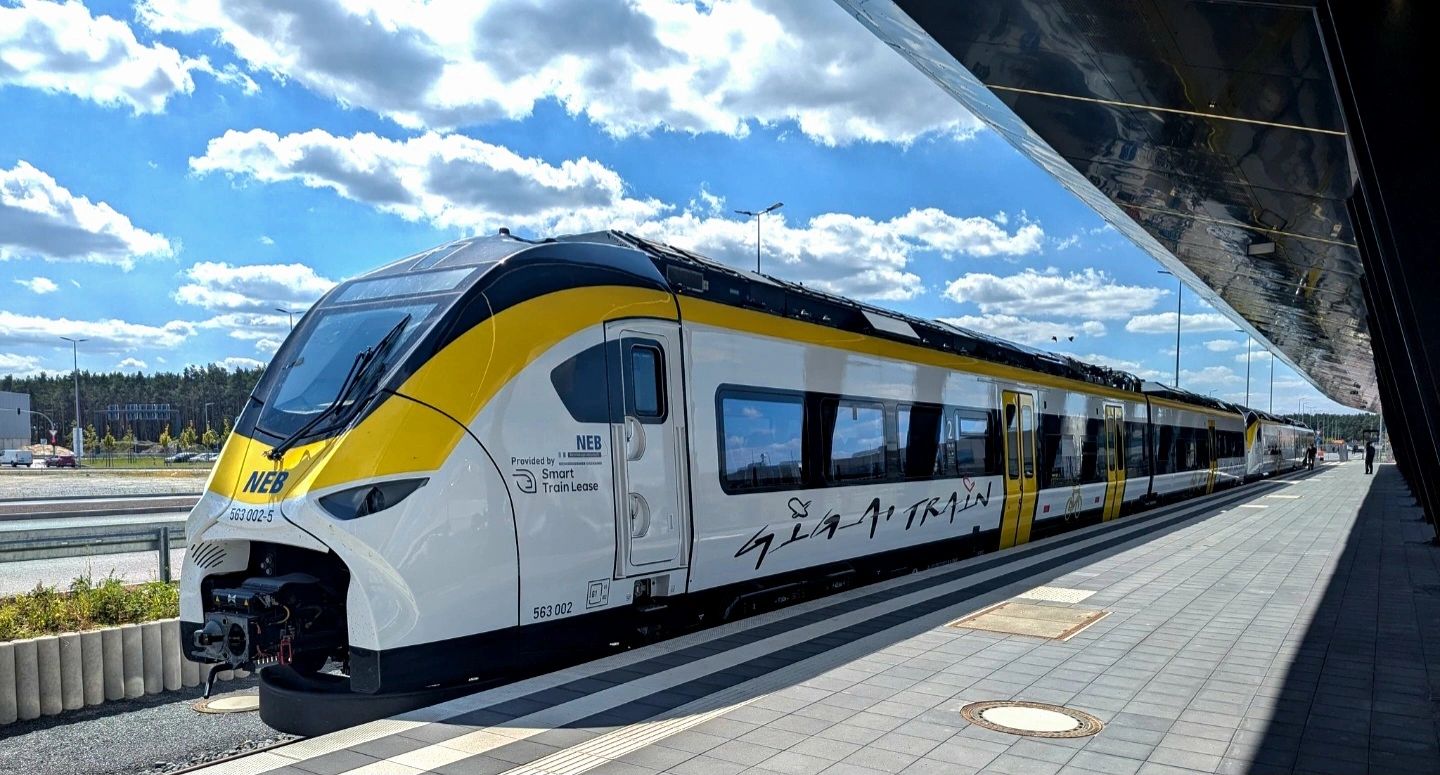
Tesla will expand its factory shuttle service in Germany beginning January 4, adding direct rail trips from Berlin Ostbahnhof to Giga Berlin-Brandenburg in Grünheide.
With this initiative, Tesla aims to boost the number of Gigafactory Berlin employees commuting by rail while keeping the shuttle free for all riders.
New shuttle route
As noted in a report from rbb24, the updated service, which will start January 4, will run between the Berlin Ostbahnhof East Station and the Erkner Station at the Gigafactory Berlin complex. Tesla stated that the timetable mirrors shift changes for the facility’s employees, and similar to before, the service will be completely free. The train will offer six direct trips per day as well.
“The service includes six daily trips, which also cover our shift times. The trains will run between Berlin Ostbahnhof (with a stop at Ostkreuz) and Erkner station to the Gigafactory,” Tesla Germany stated.
Even with construction continuing at Fangschleuse and Köpenick stations, the company said the route has been optimized to maintain a predictable 35-minute travel time. The update follows earlier phases of Tesla’s “Giga Train” program, which initially connected Erkner to the factory grounds before expanding to Berlin-Lichtenberg.
Tesla pushes for majority rail commuting
Tesla began production at Grünheide in March 2022, and the factory’s workforce has since grown to around 11,500 employees, with an estimated 60% commuting from Berlin. The facility produces the Model Y, Tesla’s best-selling vehicle, for both Germany and other territories.
The company has repeatedly emphasized its goal of having more than half its staff use public transportation rather than cars, positioning the shuttle as a key part of that initiative. In keeping with the factory’s sustainability focus, Tesla continues to allow even non-employees to ride the shuttle free of charge, making it a broader mobility option for the area.
News
Tesla Model 3 and Model Y dominate China’s real-world efficiency tests
The Tesla Model 3 posted 20.8 kWh/100 km while the Model Y followed closely at 21.8 kWh/100 km.
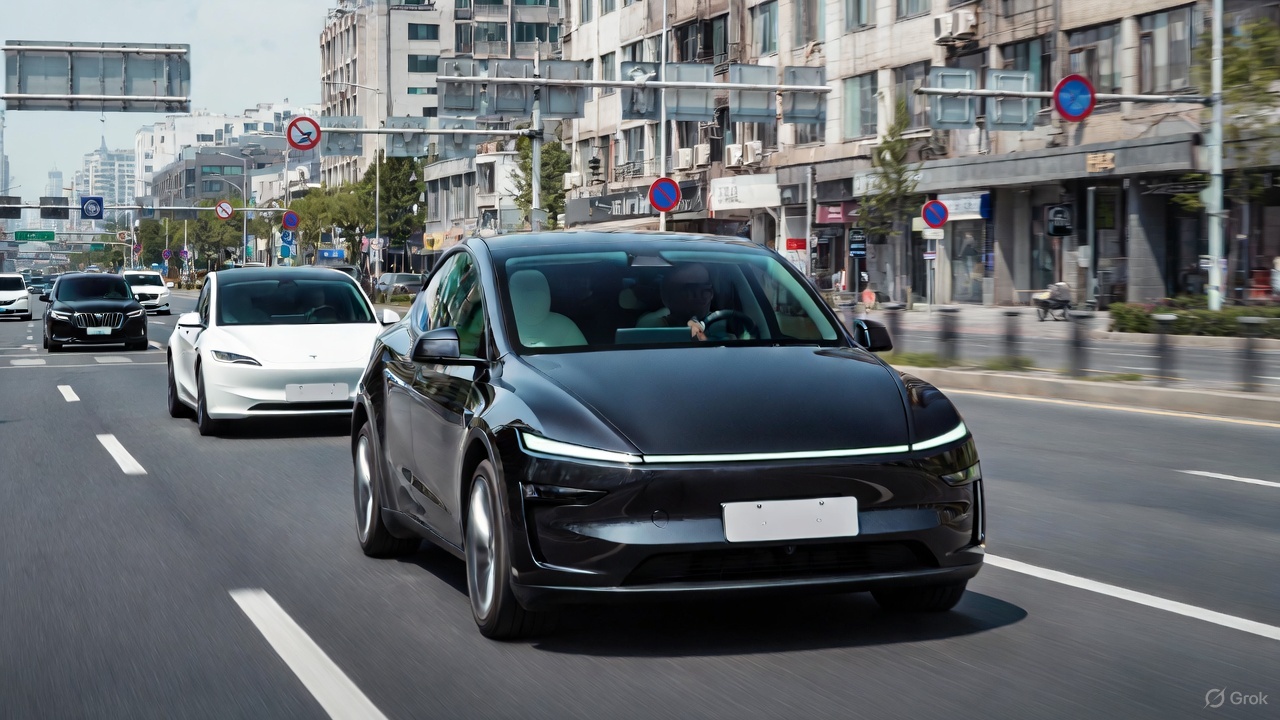
Tesla’s Model 3 and Model Y once again led the field in a new real-world energy-consumption test conducted by China’s Autohome, outperforming numerous rival electric vehicles in controlled conditions.
The results, which placed both Teslas in the top two spots, prompted Xiaomi CEO Lei Jun to acknowledge Tesla’s efficiency advantage while noting that his company’s vehicles will continue refining its own models to close the gap.
Tesla secures top efficiency results
Autohome’s evaluation placed all vehicles under identical conditions, such as a full 375-kg load, cabin temperature fixed at 24°C on automatic climate control, and a steady cruising speed of 120 km/h. In this environment, the Tesla Model 3 posted 20.8 kWh/100 km while the Model Y followed closely at 21.8 kWh/100 km, as noted in a Sina News report.
These figures positioned Tesla’s vehicles firmly at the top of the ranking and highlighted their continued leadership in long-range efficiency. The test also highlighted how drivetrain optimization, software management, and aerodynamic profiles remain key differentiators in high-speed, cold-weather scenarios where many electric cars struggle to maintain low consumption.
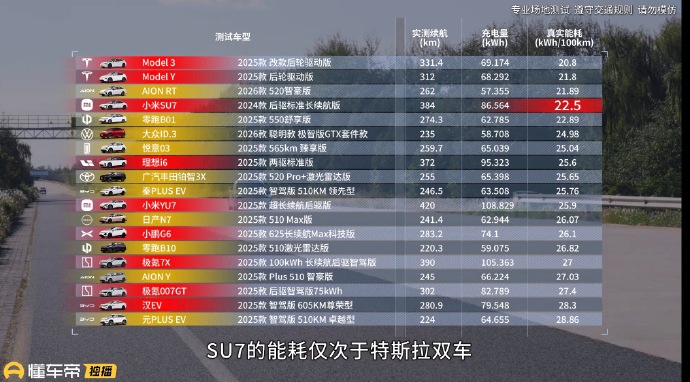
Xiaomi’s Lei Jun pledges to continue learning from Tesla
Following the results, Xiaomi CEO Lei Jun noted that the Xiaomi SU7 actually performed well overall but naturally consumed more energy due to its larger C-segment footprint and higher specification. He reiterated that factors such as size and weight contributed to the difference in real-world consumption compared to Tesla. Still, the executive noted that Xiaomi will continue to learn from the veteran EV maker.
“The Xiaomi SU7’s energy consumption performance is also very good; you can take a closer look. The fact that its test results are weaker than Tesla’s is partly due to objective reasons: the Xiaomi SU7 is a C-segment car, larger and with higher specifications, making it heavier and naturally increasing energy consumption. Of course, we will continue to learn from Tesla and further optimize its energy consumption performance!” Lei Jun wrote in a post on Weibo.
Lei Jun has repeatedly described Tesla as the global benchmark for EV efficiency, previously stating that Xiaomi may require three to five years to match its leadership. He has also been very supportive of FSD, even testing the system in the United States.









